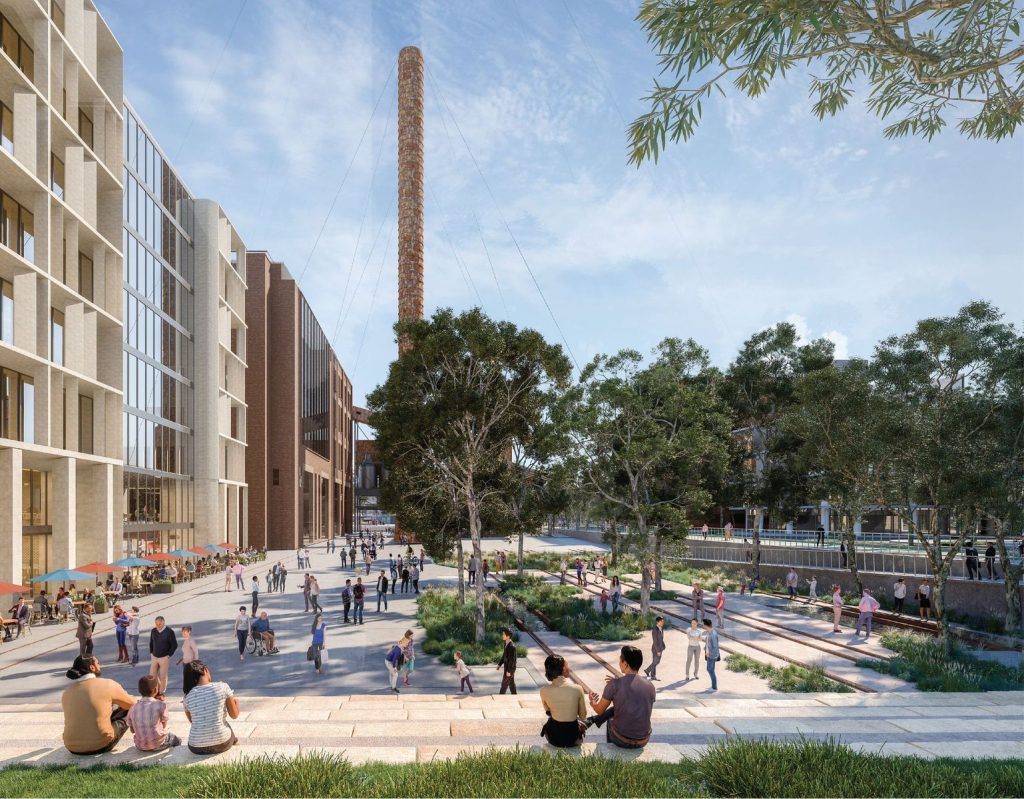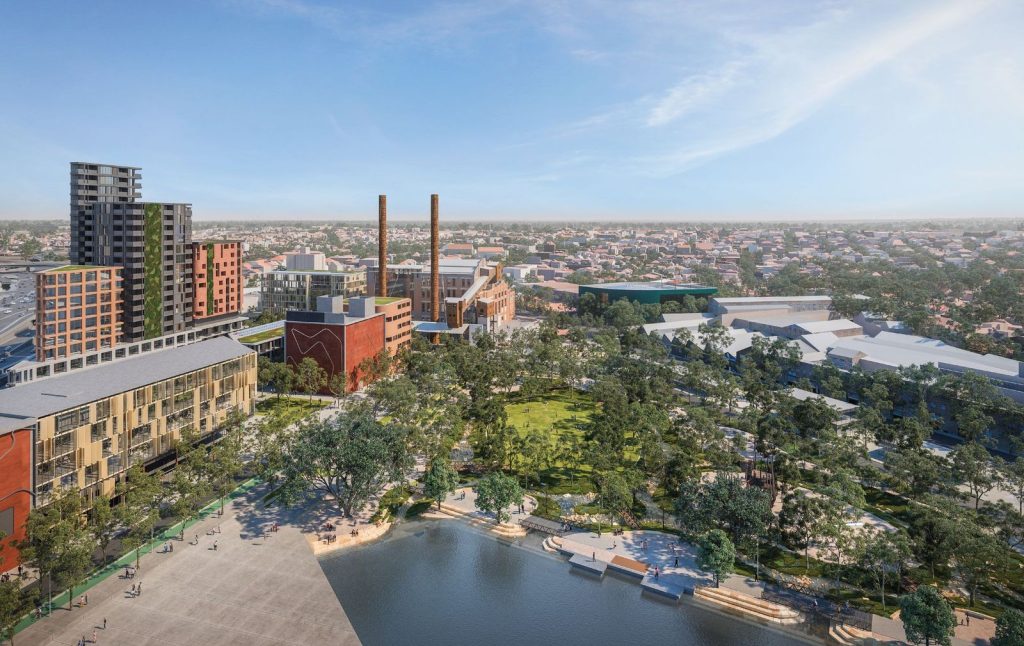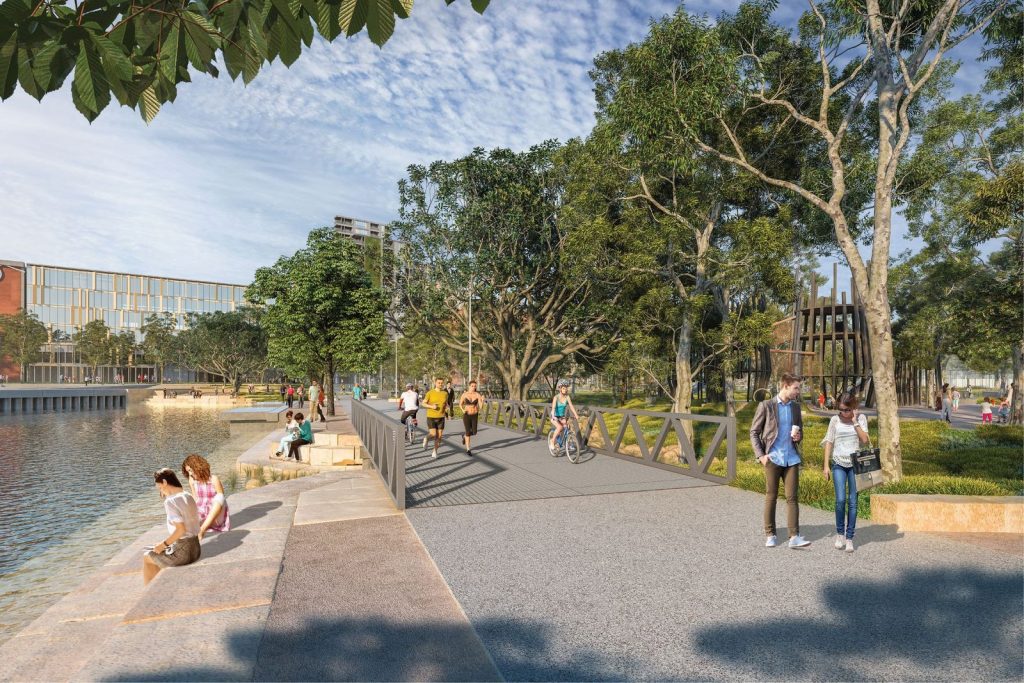
‘Australia is ready to hear our stories’ – Alison Page on how design is responding to a climactic turning point in First Nations history
‘Australia is ready to hear our stories’ – Alison Page on how design is responding to a climactic turning point in First Nations history
Share
Award-winning designer, filmmaker and 2021 IDEA Gold Medalist Alison Page confirms collaborating with Country has never been more relevant and crucial to design.
Page, a descendant of the Walbanga and Wadi Wadi people of the Yuin nation, is busier now than she has been in her entire career – with approximately 10 projects on the go and an inextinguishable drive to share the knowledge and history of FIrst Nations communities propelling her forward.
“I feel like I’ve spent the last twenty years getting ready for this moment,” she says.
Alongside establishing her first interior design studio in 1999, she founded the National Aboriginal Design Agency in 2012, was a regular panellist on the ABC TV show ‘The New Inventors’, and an expert panel member for the Federal Government’s Constitutional Recognition of Indigenous People.
She speaks of how the design landscape’s eagerness to collaborate with Country, rather than usurp it, demonstrates that meaningful co-design with First Nations communities is finally occupying a necessary place in the zeitgeist.
Designers are excited to comprehend the memory of a site, and learn how to care for Country in ensuring cultural sustainability is at the forefront of a project.
“Sustainability also involves social and cultural considerations – it’s time to have a conversation about socially responsible design,” says Page.

There is currently an active pursuit towards thoughtful engagement with Country that is empowering and worthy of celebration. Page believes we are teetering on the precipice of a turning point in history that is well overdue.
“We’re finally sitting at the table – the knowledge of First Nations people is now sought after,” she says.
Global and local key players are starting to have a dialogue with people from different socio-economic and cultural backgrounds. Page says the design landscape’s interaction with not only First Nations people, but other cultural backgrounds that are generally sidelined, will imbue projects with so much more colour, wonder and intrigue.
She references how the design movement is currently plagued by an existential crisis owed to the realisation of stifling homogeneity and genericness. Engagement with communities that can share the history of a site will enliven spaces with a sense of vibrant character and identity.
“Indigenous reason for being is caring for Country. Our perspectives can invite people to engage with Country and places on a multi-dimensional level,” says Page.
“There is a growing invitation for all people to care for Country, even in the context of a large city, it doesn’t just have to be a natural landscape.”
Australia’s well-overdue eagerness to co-design with Country is illustrated through the recent launch of Page’s collaborative appliance range with Breville – ‘An Aboriginal Culinary Journey’ – that has been seventeen years in the making.
The range features kettles, juicers, toasters and coffee machines adorned with paintings by four First Nations artists: Lucy Simpson, Warlimpirrnga Tjapaltjarri, Yukultji (Nolia) Napangati and Yalti Napangati.
Lucy Simpson is an Eora-based artist and the founder and director of design company and homewares and accessories label, Gaawaa Miyay.

Warlimpirrnga Tjapaltjarri, Yukultji (Nolia) Napangati and Yalti Napangati are members of the Pintupi Nine Family. The family of nine remained unaware of European civilisation until 1984, when they walked out of the desert and came into contact with non-First Nations people for the first time.
The kitchen appliances are contemporary versions of living tools that are thousands of years old. Page sees them as vessels in which to tell stories – “objects wrapped in Country that preserve and promote songlines”.
“Story-telling through objects was used by First Nations people to remember and memorialise the ancestral library of Dreaming and ecological data,” says Page.
The designer explains how co-designing with Country involved a process of learning and unlearning, and redefining outdated ways of thinking.
We can begin by realising Australian design and architecture is actually 65,000 years old, says Page. Although it does not resemble conventional and generally Western understandings of architecture, it is architecture nonetheless, and we should be immensely proud to possess some of the world’s oldest living designs.
She suggests this misconception may be a casualty of historical white silencing, or that when Captain James Cook and Joseph Banks first observed First Nations communities in 1770, they were simply unable to identify First Nations systems of architecture, agriculture and land management.
“They couldn’t see that we had these systems because they were so coherent with nature and respect for Country – so sustainable that it was impossible to see, almost immaterial,” says Page.
Design now possesses a strong inclination to harken back to this exceptionally sustainable land management framework that is responsive to nature and climate, considers endangered species, and offers the potential for Australia to be world leading in how we use First Nations knowledge to care for the land.
“I feel like Australia is standing on the beach with Cook again, and we can see these two systems, Western science and traditional knowledge, and we’re asking if we can bring them together,” says Page.
The designer also references how Australian design is gradually shedding the proclivity we have to place North American and European design on a pedestal and imitate their aesthetic from our spot in the corner as a patronised younger sibling.
“Robert Boyd’s assessment in The Australian Ugliness, published in 1960, is even more relevant today. He spoke of a pastiche of styles getting plonked on an ancient land,” says Page.
This realignment of priorities is evident in New South Wales, where state developers mandate that any new project has a connection to Country. Page hopes that even if it does not become a planning regulation in other states, people will follow suit and ensure that forging a connection with Country is an imperative.

When addressing how designers and architects can actively avoid tokenistic and insensitive collaborations with Country, Page implores for landowners and projects to employ Traditional Custodians and Elders as consultants and participants throughout the entire process.
“Co-designing with Country means inviting the communities of Country to engage and care for the site even after construction has stopped,” says Page.
She suggests inviting Traditional Custodians to smoke out a newly developed apartment building, and share this process with the people who will be living there.
“The landowners must consider how Traditional Custodians can culturally govern and manage the site. It must be more than just culturally mining First Nations people for their stories – that’s tokenism,” says Page.
Page says engagement with Country and First Nations communities is a question of process over product.
“Co-designing with Country has to have a life beyond the end of the project,” she finishes.
Page’s involvement in the Bays West development is a key example of a project welcoming all users of the site to care for Country in a sustainably mindful manner even construction is completed.
White Bay is located on Sydney’s Harbour and provides a home for the white seahorse, labelled endangered due to a loss of natural habitat. The bay is a working harbour that has a freshwater creek running through it.
The Bays West development Caring for Country Design guidelines hope to increase the white seahorse population by filtering the tidal waters through creeks planted with saltmarsh and effectively clean the harbour water. This method will also enable peak stormwater to flow through the natural creek lines as additional filtering.
The project aims to develop new motels in the area manufactured with recycled shopping trolleys found in the harbour. Interestingly, the team discovered the seahorses have appropriated the trolleys as a new habitat.
Sea Country stories will be meaningfully incorporated into the landscape, built forms and activations – inviting every user of the site to embrace caring for Country.
Page highlights how projects like Bays West will increase in frequency alongside Australia’s desire to know the ancient memory and history of a place.
“The world wasn’t quite ready to hear these stories, but they are now. Australia is having a reckoning, and we’re ready to learn and listen,” she says.
Photography supplied by Alison Page.
Read about the rebranding of Australia’s oldest First Nations gallery.
















